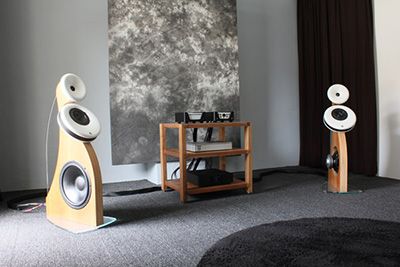i have tried this with delta 12lf. turning the dipole sideways had almost no effect on the bass. it was there, although without measurement i cant tell what was missing. they were toed in about 15 degrees. but the bass was there...
contradiction to theory i think
danny
contradiction to theory i think
danny
Gradient Helsinki are best at ~45 degrees toe-in! Not closer than 1m to side wall. The front wall and sidewalls are critical and symmetry is needed. I haven't heard them but some people like them and some don't.
http://www.gradient.fi/Gradient/Downloads_Helsinki_files/GRADIENT%20HELSINKI%20manual.pdf
http://www.gradient.fi/Gradient/Downloads_Helsinki_files/GRADIENT%20HELSINKI%20manual.pdf
Exactly in line with theory!... but the bass was there...
contradiction to theory i think
The dipole 8 radiation pattern holds true only for wavelength which are small compared to the room dimensions. If wavelength become larger (say >1m for "small rooms"), the dipole no longer shows its figure 8, but increasingly feeds the inidividual room modes only. The bass you will get at a certain position in the room will be the bass which the room modes produce there. That is the same procedure as for other bass loudspeakers, but with a somewhat different mode excitation.
With increasing toe-in (45° and larger) the dipoles tend to attenuate the lowest room modes parallel to a line connecting the bass drivers. That is a way to actively control some room modes which other radiation patterns don't provide.
Rudolf
Rudolf thanks. One can never learn enough 🙂
I suggest you build a test box and try it for yourself. Make some measurements to know if your missing something. OB is easy to build, should not take you longer then to cut a hole for the driver just to test it 🙂
And report back please when your done
Danny
I suggest you build a test box and try it for yourself. Make some measurements to know if your missing something. OB is easy to build, should not take you longer then to cut a hole for the driver just to test it 🙂
And report back please when your done
Danny
In the Gradient example posted above by Melo ... I wonder if this sort of configuration works well because of the cardioid pattern of the mid driver. The front wall reflection isn't as intense as it would be with a front fired dipole sub and the limited front wall reflection of the mid driver doesn't work against the subs FR thru the cross over region as a result. The mid is primarily operating within the subs null region. Positive or negative effect/theory? Would this work as well as it does with a true dipole patterned mid?
Last edited:
Because mid and tweeter are cardioids, there should be an almost complete null to the back (frontside). The overlap of the bass dipole with the midrange cardioid will be tricky: Both drivers are in phase to one side and out of phase to the other side. This would become more of a problem if the mid had a true dipole pattern imho.The mid is primarily operating within the subs null region. Positive or negative effect/theory? Would this work as well as it does with a true dipole patterned mid?
- Status
- Not open for further replies.
- Home
- Loudspeakers
- Multi-Way
- Sideways Dipole Bass
